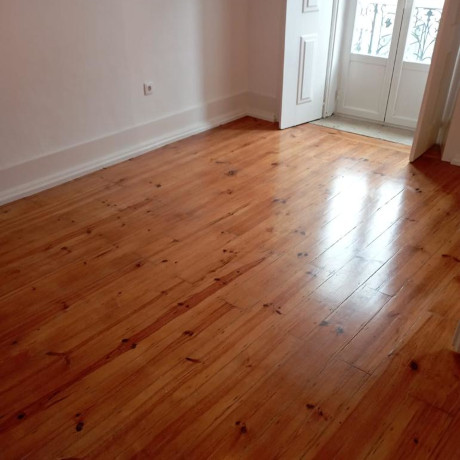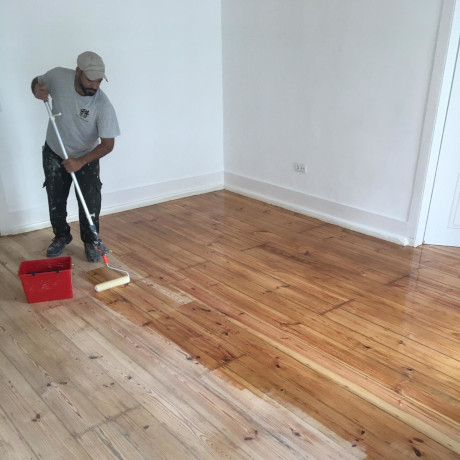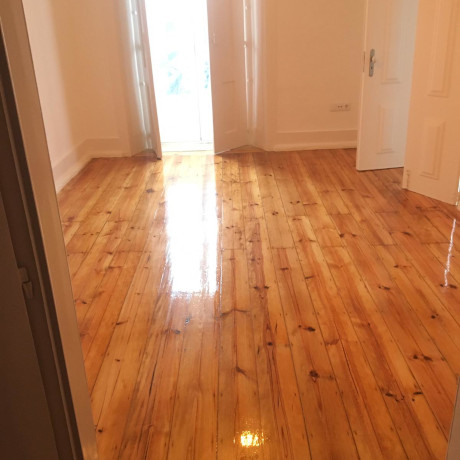- +351 966 567 882
Floor sanding in Portugal
What is floor sanding ?
what is floor sanding used for ?
Over time, wooden floors lose their protective layer, reducing the shine and vitality they had when new.
It is normal to appear dull and worn. It should be noted that without the protective barrier the rate of wear on the floor is faster, which means that the floor will be damaged more quickly, and in the event of a spill of liquids it will warp.
How long does it take to restore the floor with floor sanding process ?
In an unfurnished property that is completely free for polishing services, these durations can be considered:
- Apartment 50m2 = 3 days
- Apartment 75m2 = 4 days
- Apartment 100m2 = 5 days
If the apartment has furniture, the duration may double, so the service will also be more expensive for this reason.
What are the main advantages of floor sanding in Portugal ?
Floor sanding, the process of removing the top surface of a wooden floor using abrasive materials, offers several advantages. Here are some of the key benefits:
Surface Restoration:
Floor sanding is an effective way to restore the appearance of worn or damaged wooden floors. It helps to eliminate scratches, dents, and other imperfections, providing a smooth and renewed surface.
Improved Aesthetics:
Sanding can enhance the natural beauty of wood by revealing its grain and color. This process allows you to achieve a fresh, clean, and attractive appearance for your floors.
Removal of Stains and Discoloration:
Stains, discoloration, and other blemishes on the surface of wooden floors can be effectively removed through sanding. This process provides a uniform and consistent look to the entire floor.
Extended Lifespan:
Regular floor sanding can contribute to the longevity of wooden floors. By removing surface damage and applying protective finishes, you can help prevent further wear and tear, ultimately extending the lifespan of the flooring.
Healthier Living Environment:
Sanding helps eliminate dust, allergens, and other particles that may have accumulated on the surface of the floor. This can contribute to a healthier indoor environment, especially for individuals with respiratory issues.
Preparation for Finishing:
Floor sanding prepares the surface for the application of finishes such as varnish, wax, or oil. This not only enhances the aesthetics but also adds a protective layer to the wood, making it more resistant to damage.
Uniformity and Smoothness:
Sanding creates a smooth and level surface by removing uneven areas, making the floor more comfortable to walk on. It also ensures a uniform appearance across the entire floor.
Customization Options:
Sanding allows for customization by giving you the opportunity to choose the level of coarseness for the sandpaper. This can impact the final texture of the wood, allowing you to achieve the desired look and feel.
Increased Property Value:
Well-maintained and visually appealing wooden floors can enhance the overall value of a property. Potential buyers often appreciate the presence of quality hardwood flooring, and sanding can contribute to its attractiveness.
Easier Maintenance:
Sanded floors are generally easier to clean and maintain. The smooth surface makes it more difficult for dirt and debris to accumulate, simplifying the regular cleaning process.
Sustainability:
Rather than replacing the entire flooring, sanding allows you to rejuvenate existing wooden floors, promoting a more sustainable approach to home maintenance.
While floor sanding offers numerous advantages, it’s important to note that the process requires skill and precision. It’s often recommended to hire professionals for floor sanding to ensure a high-quality result and to avoid potential damage to the flooring.








